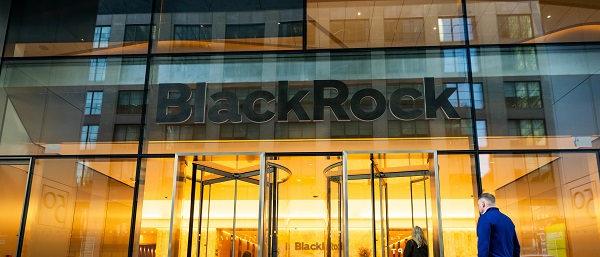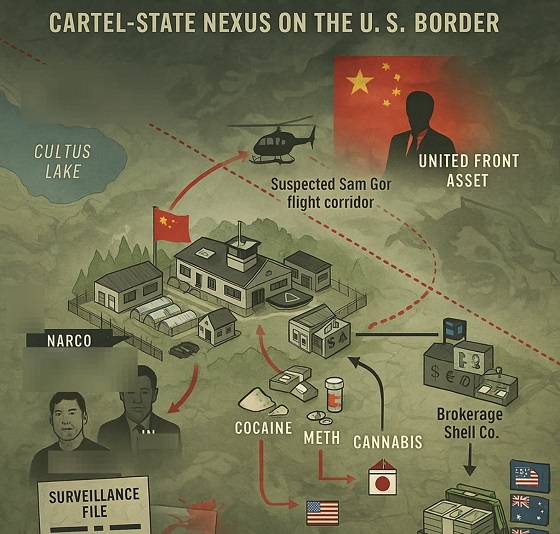Business
Senator Introduces Bill To Send One-Third Of Federal Workforce Packing Out Of DC


From the Daily Caller News Foundation
By Harold Hutchison
Republican Sen. Joni Ernst of Iowa introduced legislation Thursday that would send nearly a third of the federal employees out of the Washington, D.C. metropolitan area.
The bill, known as the ‘Decentralizing and Reorganizing Agency Infrastructure Nation-wide To Harness Efficient Services, Workforce Administration, and Management Practices (DRAIN THE SWAMP) Act, is far more sweeping than the “Returning SBA to Main Street Act,” legislation introduced by Ernst Dec. 12 that focused on the Small Business Administration (SBA). Ernst told the Daily Caller News Foundation that the move would improve services for Americans while saving billions of taxpayer dollars.
“Federal employees don’t want to work in Washington, so why should taxpayers be footing the bill? By relocating at least 30% of the federal workforce, we will save billions and improve service for veterans, small businesses, and all Americans. The bureaucrat laptop class has been out of the office for far too long, and it is time to get them back to work for the American people,” Ernst told the Daily Caller News Foundation.
The legislation requires most government agencies to “promote geographic diversity, including consideration of rural markets” when relocating employees from the D.C. area and to “ensure adequate staffing throughout the regions of the Administration, to promote in-person customer service.” Exceptions are made for fewer than 10 agencies, most involved in national security, like the Department of Defense, Central Intelligence Agency, the Department of Homeland Security, and the Department of Energy.
The legislation also requires most federal agencies to reduce the total office space in their Washington, D.C., headquarters by at least 30% in a two-year timeframe following the bill’s enactment.
Ernst issued a 60-page report Dec. 5 that covered findings from Ernst’s investigations into telework since she sent an August 2023 letter to 24 government agencies requesting a review of the issues involved with telecommuting.
Previous investigations by Ernst into telecommuting by federal employees detailed the issues that telework created involving locality pay, an adjustment to the basic pay of civilian employees in the federal government intended to make sure that federal employees have comparable compensation to private-sector counterparts in a given area of the country. In the August 2023 letter sent to 24 government agencies requesting a review of the issues involved with telecommuting, Ernst cited a media account of a VA employee who attended a staff meeting while taking a bubble bath.
Ernst issued a 60-page report Dec. 5 that covered findings from her investigations into the issues involved with telecommuting by federal employees. Those findings detailed issues that telework created involving locality pay, an adjustment to the basic pay of civilian employees in the federal government intended to make sure that federal employees have comparable compensation to private-sector counterparts in a given area of the country.
In one case cited by the senator on multiple occasions, a United States Agency for International Development (USAID) employee received locality pay for the Washington, D.C., area despite living full-time in Florida. The employee in question retired before the conclusion of the probe, according to a summary posted on the USAID inspector general’s site April 30.
Ernst’s legislation mandates that affected federal agencies “ensure that the rate of pay of the employee is calculated based on the pay locality for the permanent duty station of the employee.”
The Office of Management and Budget did not immediately respond to a request for comment from the DCNF.
Business
The ESG Shell Game Behind The U.S. Plastics Pact


From the Daily Caller News Foundation
By Jack McPherrin and H. Sterling Burnett
In recent years, corporate coalitions have increasingly taken center stage in environmental policymaking, often through public-private partnerships aligned with environmental, social, and governance (ESG) goals that promise systemic change.
One of the most prominent examples is the U.S. Plastics Pact (USPP). At first glance, the USPP may appear to some as a promising solution for reducing plastic pollution. But in practice, it has encouraged companies to make changes that are more cosmetic than environmental—and in some cases, actively counterproductive—while increasing their control over the market.
The USPP, launched in 2020, consists of more than 850 companies, non-profits, research institutions, government agencies, and other entities working together to create a new “circular economy for plastics.” Dozens of major retailers and consumer goods companies—including Coca-Cola, Danone, Kraft Heinz, Target, and Unilever—have signed on as “Activators,” pledging to eliminate certain plastics, shift to recyclable packaging, and increase the use of recycled plastics.
Yet, rather than curbing plastic production or reducing waste, the USPP has led many companies to simply transition from polystyrene to polyethylene terephthalate (PET). This shift has been encouraged by claims that PET is more widely recyclable, easier to sort, and better aligned with existing U.S. recycling infrastructure.
However, polystyrene is more moldable, is recyclable, and has insulation properties that PET doesn’t. In addition, PET is approximately 30 percent heavier than polystyrene, meaning more material is required for the same functional use. Moreover, PET requires more energy and is more expensive to produce than polystyrene. And PET’s denser packaging increases transportation-related greenhouse gas emissions and raises costs even more—though these higher costs don’t bother USPP participants, as they simply pass them on to consumers.
Only 5 to 6 percent of all plastics in the United States are recycled. Even for PET products, the overall recycling rate remains low. Just one-third of PET bottles are recycled, while the recycling rate for many other PET products such as thermoforms is less than 10 percent. Most PET products end up in landfills.
This ineffective, costly, and counterproductive shift was not accidental. It reflects the broader incentives baked into ESG scoring systems that reward superficial compliance over substantive outcomes.
ESG frameworks reward companies financially and reputationally for achieving certain narrow targets such as reductions in single-use plastics or increases in the use of packaging that is technically recyclable. However, these metrics often fail to accurately assess total plastic use in a product’s lifecycle, associated emissions, and real-world recovery. A package that uses more plastic and energy—and therefore generates more emissions—may still earn high sustainability marks, so long as the plastic is recyclable in theory. This is a textbook example of greenwashing.
A closer look at the USPP reveals that some of the world’s top plastic users and producers—Coca-Cola, PepsiCo, and Nestlé—are among the Pact’s strongest backers. These corporations, which produce billions of PET containers per year, benefit substantially from signing onto agreements such as the USPP, adopting ESG standards, and pledging support for various green goals—even if they do not deliver any green results. In fact, a 2022 report found that a large majority of retail signatories to the USPP actually increased their consumption of virgin plastic from 2020 to 2021.
Many of these same companies fund the non-profit that organized the USPP: the Ellen MacArthur Foundation. This creates a feedback loop in which large companies shape sustainability standards to their own advantage, defining which materials are “acceptable,” reaping the rewards of ESG compliance, and marginalizing smaller firms that lack the resources to adapt.
For example, by promoting PET as the preferred packaging material, the USPP conveniently reinforces the existing supply chains of these multinational bottlers, while sidelining other materials such as polystyrene that may be more cost-efficient and suitable for specific applications. Smaller manufacturers, who can’t easily switch packaging or absorb the added costs, are effectively squeezed out of the marketplace.
The USPP has not built a circular economy. Rather, it has constructed a closed circle of corporate sponsors that gain reputational boosts and higher ESG scores on the backs of consumers, despite increasing energy and plastics use.
The USPP unites ESG financiers, government agencies, nonprofits, and the largest corporate polluters in a mutually beneficial arrangement. This system rewards compliance, deflects scrutiny, manipulates public trust, eliminates free-market competition, stifles innovation, and increases costs to consumers—all while creating more waste.
Policymakers and consumers alike must recognize that ESG-aligned coalitions such as the U.S. Plastics Pact are nothing more than corporate lobbying groups disguised as sustainability initiatives. They do not improve environmental quality, but they do profit immensely from the illusion of doing so.
Jack McPherrin ([email protected]) is a Research Fellow for the Glenn C. Haskins Emerging Issues Center and H. Sterling Burnett, Ph.D., ([email protected]) is the Director of the Arthur B. Robinson Center on Climate and Environmental Policy, both at The Heartland Institute, a non-partisan, non-profit research organization based in Arlington Heights, Illinois.
Alberta
Alberta’s industrial carbon tax freeze is a good first step

 By Gage Haubrich
By Gage Haubrich
The Canadian Taxpayers Federation is applauding Alberta Premier Danielle Smith’s decision to freeze the province’s industrial carbon tax.
“Smith is right to freeze the cost of Alberta’s hidden industrial carbon tax that increases the cost of everything,” said Gage Haubrich, CTF Prairie Director. “This move is a no-brainer to make Alberta more competitive, save taxpayers money and protect jobs.”
Smith announced the Alberta government will be freezing the rate of its industrial carbon tax at $95 per tonne.
The federal government set the rate of the consumer carbon tax to zero on April 1. However, it still imposes a requirement for an industrial carbon tax.
Prime Minister Mark Carney said he would “improve and tighten” the industrial carbon tax.
The industrial carbon tax currently costs businesses $95 per tonne of emissions. It is set to increase to $170 per tonne by 2030. Carney has said he would extend the current industrial carbon tax framework until 2035, meaning the costs could reach $245 a tonne. That’s more than double the current tax.
The Saskatchewan government recently scrapped its industrial carbon tax completely.
Seventy per cent of Canadians said businesses pass most or some industrial carbon tax costs on to consumers, according to a recent Leger poll.
“Smith needs to stand up for Albertans and cancel the industrial carbon tax altogether,” Haubrich said. “Smith deserves credit for freezing Alberta’s industrial carbon tax and she needs to finish the job by scrapping the industrial carbon tax completely.”
-

 International2 days ago
International2 days agoIce Surprises – Arctic and Antarctic Ice Sheets Are Stabilizing and Growing
-

 International1 day ago
International1 day agoTrump envoy Steve Witkoff calls out neocons pushing for war with Iran
-

 International2 days ago
International2 days agoTrump, Netanyahu reportedly at odds ahead of Middle East visit
-

 Crime2 days ago
Crime2 days agoVeteran RCMP Investigator Warns of Coordinated Hybrid Warfare Targeting Canada
-

 Alberta1 day ago
Alberta1 day agoIt’s not just Alberta flirting with western separatism now
-

 Crime1 day ago
Crime1 day agoRCMP warns Central Alberta property owners of paving contractor scams
-

 Business1 day ago
Business1 day agoU.S., China agree to 90-day tariff reduction after negotiations
-

 Censorship Industrial Complex2 days ago
Censorship Industrial Complex2 days agoIn Britain the “Thought Crime” Is Real




